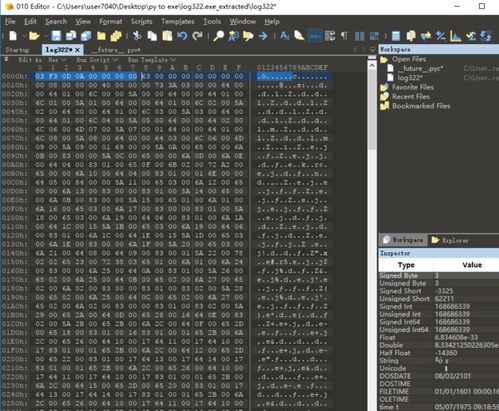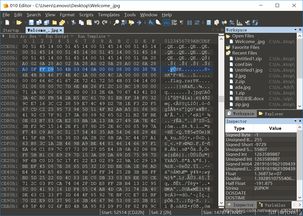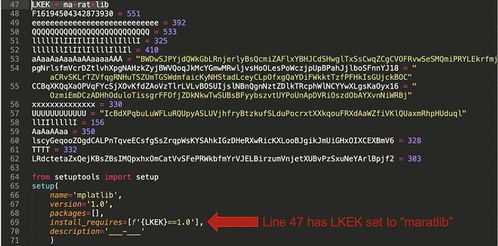亲爱的编程爱好者们,你是否曾梦想过自己动手打造一枚独一无二的加密数字货币?别再羡慕比特币和以太坊了,今天,就让我带你一起走进Python的世界,用代码开启你的加密数字货币之旅!
一、揭秘加密数字货币的魅力

加密数字货币,顾名思义,就是利用加密技术保证货币安全、匿名和去中心化的数字货币。比特币作为加密数字货币的鼻祖,自2009年诞生以来,就以其独特的魅力吸引了无数的目光。而Python,作为一门功能强大的编程语言,在加密数字货币领域也大放异彩。
二、Python加密数字货币代码入门

想要用Python编写加密数字货币代码,首先需要了解一些基础知识。以下是一些必备技能:
1. 区块链技术:区块链是加密数字货币的核心技术,它以区块的形式存储数据,并使用密码学方法保证数据的安全性和不可篡改性。
2. 加密算法:加密算法是保证数字货币安全的关键,常见的加密算法有SHA-256、ECDSA等。
3. Python编程基础:熟悉Python编程语言,掌握基本的数据结构和算法。
接下来,让我们用Python编写一个简单的加密数字货币代码。
三、Python区块链实现

以下是一个简单的Python区块链实现示例:
```python
import hashlib
import json
from time import time
class Block:
def __init__(self, index, transactions, timestamp, previous_hash):
self.index = index
self.transactions = transactions
self.timestamp = timestamp
self.previous_hash = previous_hash
self.hash = self.calculate_hash()
def calculate_hash(self):
block_string = json.dumps(self.__dict__, sort_keys=True)
return hashlib.sha256(block_string.encode()).hexdigest()
class Blockchain:
def __init__(self):
self.unconfirmed_transactions = []
self.chain = []
self.create_genesis_block()
def create_genesis_block(self):
genesis_block = Block(0, [], time(), \0\)
genesis_block.hash = genesis_block.calculate_hash()
self.chain.append(genesis_block)
def add_new_transaction(self, transaction):
self.unconfirmed_transactions.append(transaction)
def mine(self):
if not self.unconfirmed_transactions:
return False
last_block = self.chain[-1]
new_block = Block(index=last_block.index + 1,
transactions=self.unconfirmed_transactions,
timestamp=time(),
previous_hash=last_block.hash)
new_block.hash = new_block.calculate_hash()
self.chain.append(new_block)
self.unconfirmed_transactions = []
return new_block
def is_chain_valid(self):
for i in range(1, len(self.chain)):
current = self.chain[i]
previous = self.chain[i - 1]
if current.hash != current.calculate_hash():
return False
if current.previous_hash != previous.hash:
return False
return True
创建区块链实例
blockchain = Blockchain()
添加交易
blockchain.add_new_transaction({'sender': 'Alice', 'recipient': 'Bob', 'amount': 10})
blockchain.add_new_transaction({'sender': 'Bob', 'recipient': 'Charlie', 'amount': 5})
挖矿
blockchain.mine()
验证区块链
print(blockchain.is_chain_valid())
这段代码实现了一个简单的区块链,包括创建区块、添加交易、挖矿和验证区块链等功能。
四、Python加密算法应用
在加密数字货币中,加密算法起着至关重要的作用。以下是一些常用的Python加密算法:
1. SHA-256:一种广泛使用的加密算法,用于生成数据摘要。
2. ECDSA:一种数字签名算法,用于验证交易的真实性。
以下是一个使用SHA-256算法生成数据摘要的示例:
```python
import hashlib
data = \这是一段需要加密的数据\
hash_object = hashlib.sha256(data.encode())
hex_dig = hash_object.hexdigest()
print(hex_dig)
这段代码将输入数据加密成SHA-256摘要。
五、
通过本文的介绍,相信你已经对Python加密数字货币代码有了初步的了解。当然,这只是一个简单的入门示例,实际开发中还需要考虑更多因素,如安全性、性能等。但无论如何,Python在加密数字货币领域的应用前景广阔,让我们一起期待更多创新和突破吧!
